NEW YORK, N.Y.—“Construction is a very difficult job to do social distancing on,” New York City District Council of Carpenters President Paul Capurso tells LaborPress. But as the construction industry recovers from its epidemic-peak nadir, the union is relying on protective gear and education to keep its members safe.
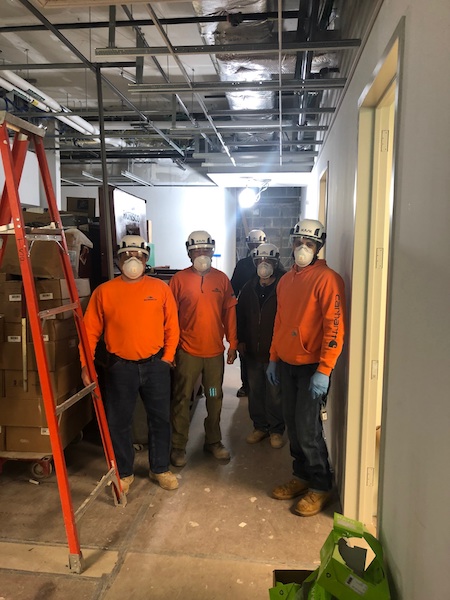
Capurso took office in early March, just before the COVID-19 epidemic forced the closing of all but emergency and essential jobs. By the end of the month, only 10- to 20-percent of the union’s members were still working.
Since then, he says, “the jobs have opened up, but because of social distancing, there are fewer people on the job.” Capurso estimates that the number of members working is now between 30- and 40-percent.
The union reacted to the virus, he says, by buying large amounts of PPE [personal protective equipment], informing members “what the new normal looks like” — and working with other building-trades unions, the union contractors of the Building Trades Employers Association, and the Real Estate Board of New York developers’ trade group to create standards.
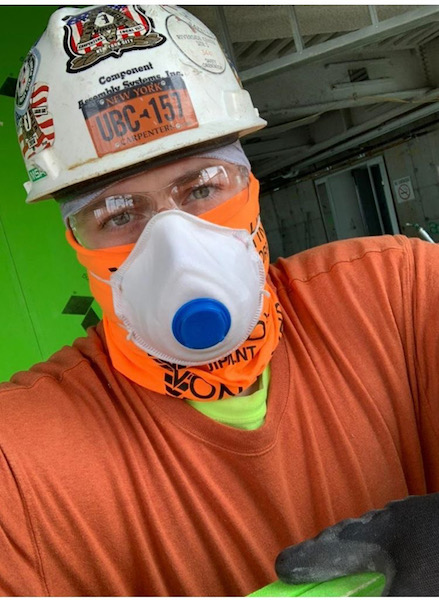
Contractors have generally been cooperative, Capurso says, such as by increasing the air circulation on inside jobs, where workers are more vulnerable to viruses lingering in the air.
Providing protective gear is normally the contractor’s responsibility. But the Carpenters bought up 200,000 N95 and surgical face masks, 75,000 canisters of hand sanitizer, and more than 10,000 pairs of safety goggles, as well as plastic face shields and adapters to fit them onto hard hats.
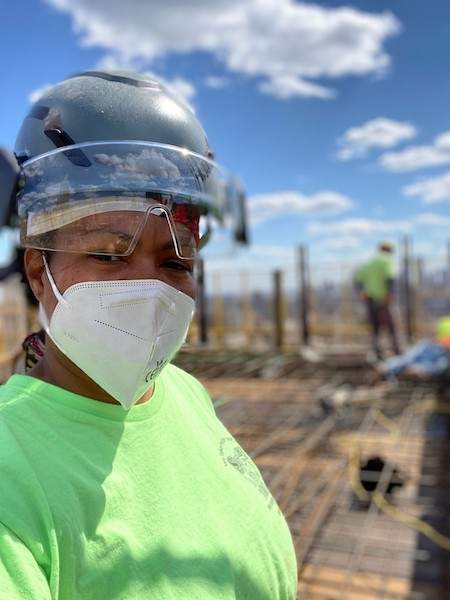
“We want to make sure that everyone’s working safe,” Capurso says. “We don’t want anybody to be put in harm’s way.”
One obvious bottleneck for social distancing is the hoists and elevators that bring workers to and from jobs on different floors. The industry standards include staggering shifts by trade where possible, so workers don’t all arrive and leave at the same time, and urging workers to bring their own lunch. But Capurso says it’s still been very difficult to run the lifts at less than half capacity.
Another problem is that there are some tasks, such as pouring concrete, where people have to work less than six feet apart. Capurso says the union is relying on protective gear and having the same fixed crew stay together on a job, and not bringing in outsiders.
“If you have to work in pairs, make sure you’re wearing your PPE, and that it’s enforced,” he says. “I like to think we’re doing a pretty good job of that.”
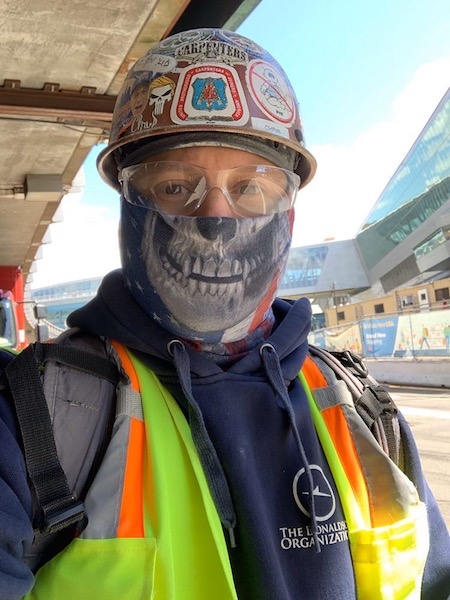
The union has put up posters on job sites instructing workers to stay six feet apart, wear face coverings, wash their hands regularly, and “stay home if you are sick.”
“We’re used to working when sick, but now the instruction is not to do that,” Capurso says.
More directly, the Carpenters’ campaign to keep members informed includes live Zoom meetings with shop stewards and apprentices. Shop stewards and foremen have the dual role of passing safety information from the union leadership down to rank-and-file members on the job, and passing complaints about conditions up to business agents.
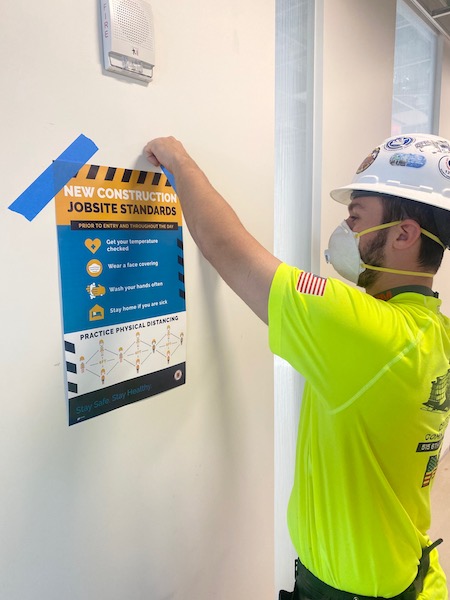
“I tell them, ‘Safety first. Be mindful of what you’re doing. Take precautions every day. Make sure you have the proper PPE. Make sure you work safely and come home safely,’” says Charles Bullock, a Carpenters shop steward at New York-Presbyterian Brooklyn Methodist Hospital in Park Slope.



